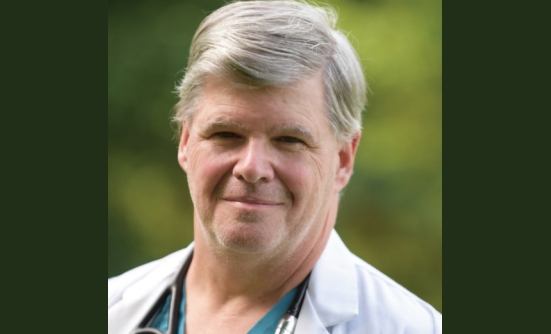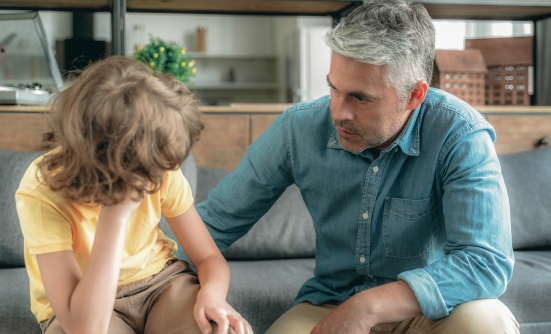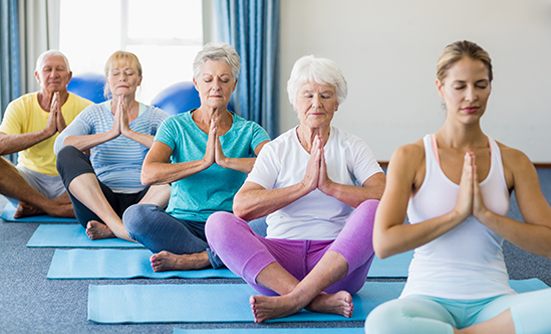In October 2022, I discussed “alternative medicine,” which refers to practices that are not based on research or science. Some of these approaches, such as homeopathic practices, date back to the 18th century, before scientists at least had the concept of atoms and molecules. Alternative practices usually have no scientific basis and, in many instances, have been proved as wrong by research; nevertheless, some practitioners continue to foist these frauds on unsuspecting or desperate patients.
Today I’d like to discuss “complementary medicine,” which includes practices that often have very old roots but have been shown through research to be of value to medical treatment. Some of these practices have particular relevance in the treatment of cancer, including acupuncture, chiropractic practice, and massage therapy.
Acupuncture
Acupuncture goes back some 3000 years and is considered part of Chinese traditional medicine. In acupuncture, very slim needles are introduced into specific areas of the body to produce an effect. For centuries, acupuncture was thought to balance the life force, or “Qi” (pronounced “chee”), which is not a system verified by science, but the physical effect on the body has been studied and confirmed by researchers.
Let me show you that I am not dismissing traditional Chinese medicine. I participated in an emergency medicine exchange program in China several years ago. We went to a modern hospital in Shanghai, and in the pharmacy, I recall watching a man presenting the pharmacist with a prescription. The pharmacist then grabbed a brown paper bag.
I assumed that the bag was to place the bottle of pills in, as we do in the United States. But it was not. The pharmacist went over to open burlap bags, grabbed a handful (an interesting measuring system) of dried scorpions, 2 handfuls of bay leaves, and 2 other items I was too shocked to recall. He dumped all this into the brown paper bag, and our translator heard the instruction to brew all this with tea, twice a day, until everything is “gone” (and becomes part of the tea).
This would seem to belong to “alternative medicine,” but our guide assured us that the hospital only used science-based medicines. When we compare life expectancy of Chinese versus Americans, it is practically the same: 77.10 years in China and 77.28 in the United States. Of course, it’s more than just medical treatment that influences life expectancy, but based on the life expectancy in China, there is clearly value in scientifically vetted healing traditions. As with all things that work their way into modern medical practice, we research complementary medicine.
There is no overwhelming evidence to say that acupuncture cures the broad array of problems that it was once thought to do, but there is a definite body of evidence that acupuncture helps with the side effects of cancer treatment.1 The evidence, in fact, is such that it’s reasonable to include acupuncture in your cancer care.
Research shows that acupuncture has little downside and a potential benefit to the patient in its ability to relieve the symptoms associated with cancer and cancer treatment, such as muscular pain and even anxiety and depression.1,2
Researchers are looking into how exactly acupuncture works. Although what nerve pathways are activated or what bodily responses occur with acupuncture is still not known, research does show a benefit to some (although not all) patients. The leading thoughts are that acupuncture either activates endorphins—our body’s natural pain fighters—or it may be linked to the inflammatory response by healing factors that are “recruited” into the area through acupuncture. The research about this continues.
Chiropractic Manipulation
Chiropractors work by manipulating the spine and musculature of the back. Hippocrates (the father of medicine) talked about spine manipulation in 400 BC, but the true “birth” of chiropractic medicine is claimed to be in 1865, when Daniel David Palmer adjusted the spine of a deaf janitor and “claimed” to have restored the man’s hearing.
The early claims that practically any disease could be cured with spinal manipulation have matured to a modern position supported by research that chiropractic practices have a specific benefit in musculoskeletal problems and some headaches. Claims about improved immune system functioning, asthma, or any other non-musculoskeletal issues are not supported by current research, and such assertions veer into the realm of alternative medicine.
This raises the point that complementary medicine can straddle a divide between the worlds of legitimate and fairy-tale medicine. The dividing line is very easily defined by what scientists call peer-reviewed research, in which researchers review the studies done by other researchers in their field.
So, for mobility, muscle strength, flexibility, and certain painful areas during cancer treatment, chiropractic manipulation has been scientifically shown to reduce pain and physical discomfort.3 It has never, however, been shown to cure cancer.
Massage Therapy and Lymphedema
Massage therapy is another technique that focuses on the musculoskeletal system. Research supports the ability of massage therapy to reduce pain, improve mobility, and lessen anxiety and depression.4,5
A specific form of massage therapy called “retrograde massage” may also help with lymphatic drainage, which can be a problem in lymphedema, a condition associated with breast cancer, for example. Let’s review this briefly.
Many people are aware that we have 2 circulatory systems. The one we all know is the heart-driven system that moves the blood to nourish our cells. The second circulatory system is the lymphatic system, which functions with our immune system. The lymphatic system is a series of “lymph nodes” and connecting tubes that carry infection-fighting white blood cells and a fluid called “lymph.” This system is everywhere in the body, just like our cardiovascular system. The lymphatic system, however, has no heart to pump the fluid around; instead, this is done by our movements, which is why being mobile—especially during cancer—is so important.
Lymphedema can occur when some of the lymph nodes are removed to treat cancer, and the tubes containing lymph have nowhere to deposit the incoming fluid. So the fluid leaks out of the tubes into the surrounding tissue, causing swelling.
Massaging a limb with retrograde massage, or massage that works from the hand toward the shoulder, for example, helps push the fluids back toward the body, where they can be taken up by the functioning parts of the lymphatic system.
No Cure-All Techniques
Although these 3 techniques offer a scientifically studied remedy to specific medical problems, none is a cure-all technique. Acupuncture can help with pain, chiropractic care can ease muscular stiffness and improve mobility, massage therapy can improve mood and lessen pain, and retrograde massage can help with lymphedema.
Other techniques, such as yoga and meditation, have also been shown by researchers to improve quality of life for patients with cancer. No one technique does everything, and all these techniques have been studied and are continuing to be studied.
Traditional, Alternative, and Complementary Medicine
Let me sum up the 3 broad categories we’ve discussed in my past few articles. Traditional medical practices are based on scientific facts that are studied repeatedly in ongoing research that is being improved by new discoveries and inventions. Doctors pass many rigorous tests over a decade of study and training in clinical practice before treating a patient on their own.
By contrast, alternative medicine may often not have any required training program. Some of these programs require only a bank account large enough to cover the fees. Facts are whatever people want them to be, without scientific evidence, and range from the well-intended, though misguided, technique to frank sham artists who prey on desperate people by promising a cure for an autistic child. To get a cure, you have to travel to Mexico; it may be a tip-off that something shady is going on if you have to leave your country to get care.
Third is complementary medicine, which includes techniques developed over the ages, and, in some cases, although not scientifically developed, have been scientifically studied and proved beneficial. These techniques, including acupuncture, chiropractic manipulation, massage therapy, meditation, and yoga, can reduce side effects of cancer treatment and improve the patient’s quality of life.
Ask Questions, Then Ask More
A point I make again and again about any treatments offered to all patients, but especially to patients with cancer, is that when anyone offers you a treatment, ask about the research behind it. If the treatment is legitimate, this will be a welcomed question. If not, you’ll likely get diversionary efforts or some rant about the medical establishment. Often the claim is that “they don’t want you to know about...” (fill in the blank).
So, ask questions, a lot of questions, and keep asking, until you understand. In my book Crushing Cancer: A Patient’s Complete Guide to Managing a Cancer Diagnosis, I discuss at length how to sort the good treatments from the bad. My central point is that legitimate physicians and providers will answer your questions and encourage you to ask more.
Write down your questions so you don’t forget them, and after you leave the doctor’s office, keep coming up with more questions until you are confident that you understand what they are recommending to you.
People who are passing nonsense off as medicine don’t like being asked questions, but some are very well-practiced at evasive answers. A lot of nonsense approaches sound good at first, but as you dig in, they begin to fall apart quickly.
A wonderful quote by Tim Minchin, a British-Australian comedian, from his poem Storm that was made into a short animated film says, “You know what they call alternative medicine that’s been proved to work? Medicine.”
Stay safe, ask questions, and then ask more questions. If it sounds too good to be true, it likely is not true.
References
- Anorim D, Amado J, Brito I, et al. Acupuncture and electroacupuncture for anxiety disorders: a systematic review of the clinical research. Complementary Therapies in Clinical Practice. 2018;31:31-37.
- Smith CA, Armour M, Lee MS, et al. Acupuncture for depression. Cochrane Database Syst Rev. 2018;3:CD004046.
- Yang J, Wahner-Roedler DL, Zhou X, et al. Acupuncture for palliative cancer pain management: systematic review. BMJ Support Palliat Care. 2021;11:264-270.
- Lee SH, Kim JY, Yeo S, et al. Meta-analysis of massage therapy on cancer pain. Integr Cancer Ther. 2015;14:297-304.
- Qin S, Xiao Y, Chi Z, et al. Effectiveness and safety of massage in the treatment of anxiety and depression in patients with cancer: a protocol for systematic review and meta-analysis. Medicine (Baltimore). 2020;99:e22262.
About the Author
Kerry Forrestal, MD, MBA, FACEP, is an emergency medicine physician in Salisbury, MD, and author of Crushing Cancer: A Patient’s Complete Guide to Managing a Cancer Diagnosis.













